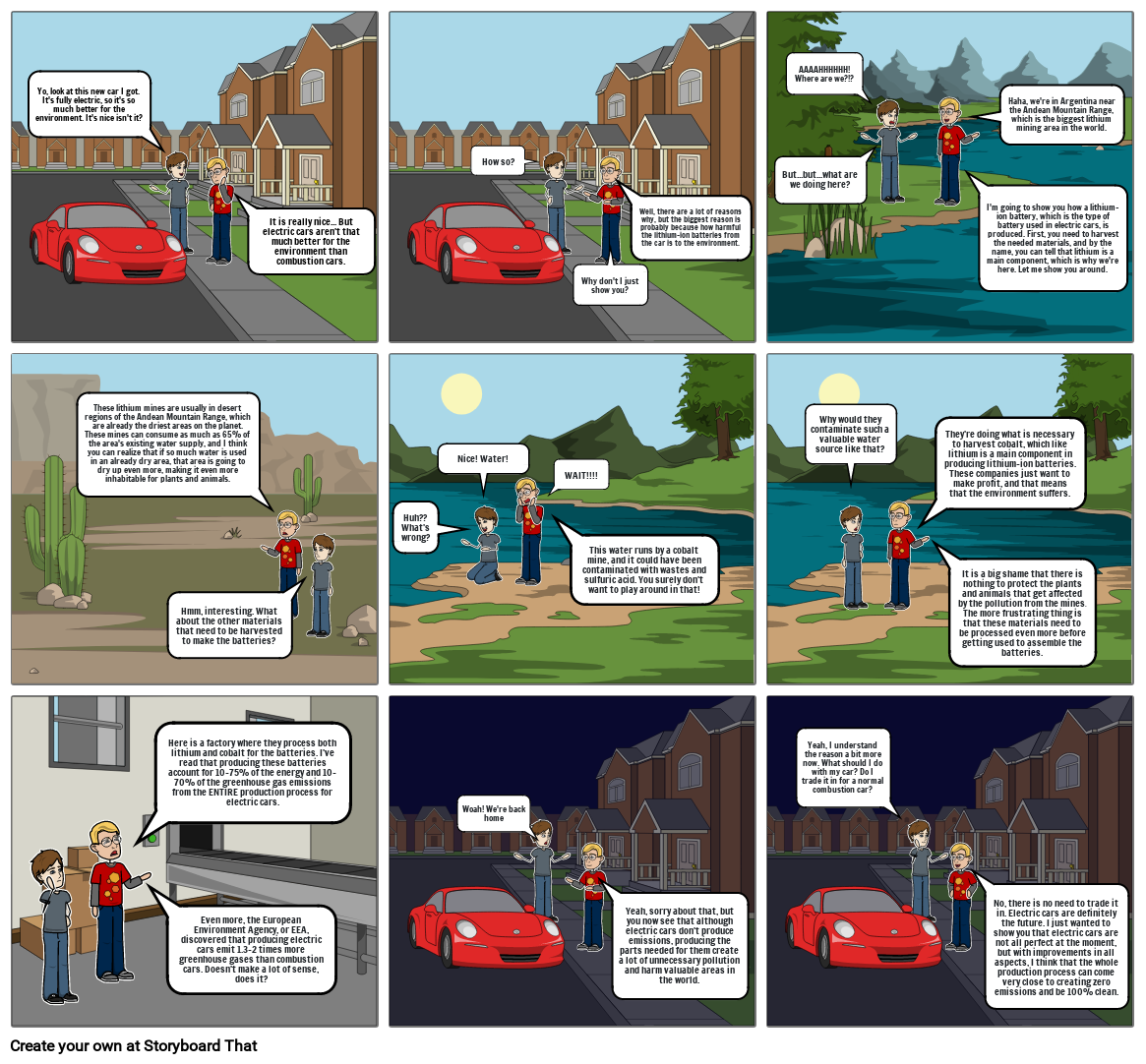jjj

Süžeeskeem Tekst
- But...but...what are we doing here?
- AHHHHHH!Where are we?!?
- Haha, we're in Argentina near the Andean Mountain Range, which is the biggest lithium mining area in the world.
- How so?
- Why don't I just show you?
- Well, there are a lot of reasons why, but the biggest reason is probably because how harmful the lithium-ion batteries from the car is to the environment
- How so?
- Why don't I just show you?
- Well, there are a lot of reasons why, but the biggest reason is probably because how harmful the lithium-ion batteries from the car is to the environment
Loodud üle 30 miljoni süžeeskeemi
Proovimiseks Pole Vaja Allalaadimist, Krediitkaarti ega Sisselogimist!
